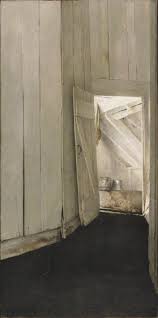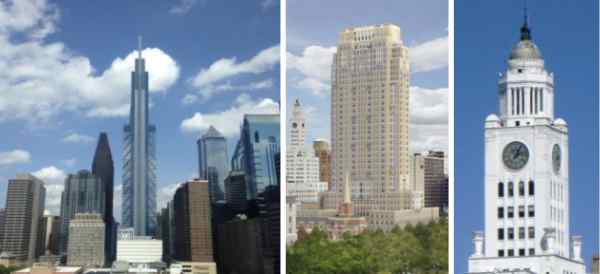
IN THE CORNER WITH MAURY
Richard Terrill recounts a wonderful story in “Who Was Bill Evans?”
Jazz bandleader Stan Kenton told a story about himself as a kid, trying to sneak into a Paris club to hear jazz. He was too young to drink, even in France. The concierge finally said, ok, just go sit in the corner with that old man. His name is Maury.
And it went like this for several evenings. Go sit in the corner with Maury, kid.
Years later, Kenton learned that the old man had been Maurice Ravel.

POP GOES THE WEASEL
News that the Abrams House in Pittsburgh, designed by Venturi, Rauch and Scott Brown in 1979, has been sold and is to be demolished. Apparently, the new owner, who lives in the adjacent Giovannitti House (designed by Richard Meier) wants to enlarge his garden—the original owner of the Giovannitti House had sold the back part of his lot to the Abrams. Or maybe he just wanted to get rid of an eyesore? Venturi’s postmodern antics do not age particularly well. I was struck by the presence of a large (looks to be about 8 feet by 12 feet) painting by Roy Lichtenstein in the Abrams living room. Lichtenstein (1923-97), was the premier Pop artists of that epoch; a painting of his sold in 2011 for a record $43 million. I assume that the Pittsburgh Lichtenstein was not included in the house sale, which netted a paltry $1.1 million. Apparently Pop art is more in demand than Pop architecture.

A CALM IN THE STORM
“Modernism wasn’t just a style—it was a way of thinking, a way of life,” expounds Jessica Todd Smith in a video on the Philadelphia Museum of Art website. Smith, who is the curator of the current PMA show, “Modern Times: American Art 1910-1950” (on view until September 3), also refers to the “beautiful chaos of innovation.” Those four decades were, indeed, chaotic: two world wars, the Soviet revolution, the Great Depression, social upheavals, the emergence of mass production and the consumer society. Where did this stormy time leave the artist? Adrift, judging from this show. Museums don’t pipe-in music (except in the gift shop), but if they did Cole Porter’s “Anything Goes” (from a 1932 musical of the same name) would be perfect. Innovation was the order of the day: Calder’s wire mobiles, O’Keefe’s enlarged lilies, Pollock’s frenetic daubing. “The world’s gone mad today. And good’s bad today.” It’s a relief to come across Horace Pippin’s calm portrait of Christian Brinton (1940), a supportive art critic. Calm, too, are Edward Hopper’s studies for his etching, American Landscape (1920). The work of photographers tends to be likewise distinctly un-frenetic, perhaps because shooting (especially with a large format camera), developing,

PAPER BLINKERS
The first university architecture programs appeared in the late nineteenth century, at MIT (1865) and the University of Pennsylvania (1868). Previously—and for a long time thereafter—most architects in the English-speaking world learned their craft through apprenticeship, on the job, working in an office. Frank Lloyd Wright, Edwin Lutyens, Charles Rennie Mackintosh, Charles A. Platt, Horace Trumbauer, Ralph Adams Cram, and Bertram Goodhue are prominent examples. While it is still theoretically possible to become a registered architect through apprenticeship, in practice formal education has taken over the training of architects. How does one teach someone to be an architect? Since architecture is not a science, there is no underlying body of knowledge to absorb. Architects study precedents, but learning to design is like learning how to swim, you have to jump in the water. Hence, the studio system. Students are assigned building problems—simple at first, increasingly more complex—and develop solutions in drawings and models. These are evaluated by the teacher and invited “jurors”; the term is apt since student are required to “defend” their designs in public. The process is intended to simulate an actual building commission in the sense that there is a list of functional requirements and an actual building site,

TOPPERS
The Comcast Technology Center (Foster + Partners) in downtown Philadelphia is nearing completion. It’s not open yet, but its impact on the skyline is already apparent. Meh. The most that can be said about it is that it recalls a De Stijl composition of overlapping boxes. But the glass boxes—the building is all glass, of course—lack refinement and look as if a preliminary concept sketch had been rushed into construction. The clumsiest element is the optimistically named “lantern.” There are many interesting skyscraper tops, such as the mooring mast atop the Empire State Building, or the Chrysler Building’s Art Deco spire, but the illuminated Comcast top only looks good at night (like most all-glass buildings). During the day it is a dud, an awkward prism.
The 34-story Alexander tower (Robert A. M. Stern Architects) is much more successful. Although a local architecture critic scoffed at the “wedding cake” design, the nice thing about a wedding cake is that the design supports an interesting top. The Alexander doesn’t make a big deal of its top, but it steps back subtly in an interesting way and is surmounted by a sort of laid-back Mayan temple. Just to the left in the photograph you can see a building from the golden age of skyscraper design,

CRITICS AND CRUSADERS
The Architects Newspaper recently asked a number of critics, academics, and architects “What do you see as the role of the critic in architecture today? Why is it important? What aspects of architecture are not being addressed today by critics?” and “What are the problems with criticism today?” Weighty questions that produced, in most cases, weighty—and lengthy—answers. You can judge for yourself. One of the more insightful comments was that of Frances Anderton, the British host of a weekly Los Angeles design and architecture radio show. “It was easier to be a critic when you were crusading for modernism, or another -ism, from a podium at a highly-regarded publication,” she observed. The pioneers of this mode were Allan Temko at the San Francisco Chronicle (1961-93) and Ada Louise Huxtable at New York Times (1963-82). They were preceded by Lewis Mumford at the New Yorker (1934-1960s), although his relationship to modernism was often equivocal. There had been earlier architecture critics, of course. Montgomery Schuyler wrote for the New York Times (1883-1907) and Mariana Griswold Van Rensselaer’s essays appeared in Century Magazine and Garden and Forest,

